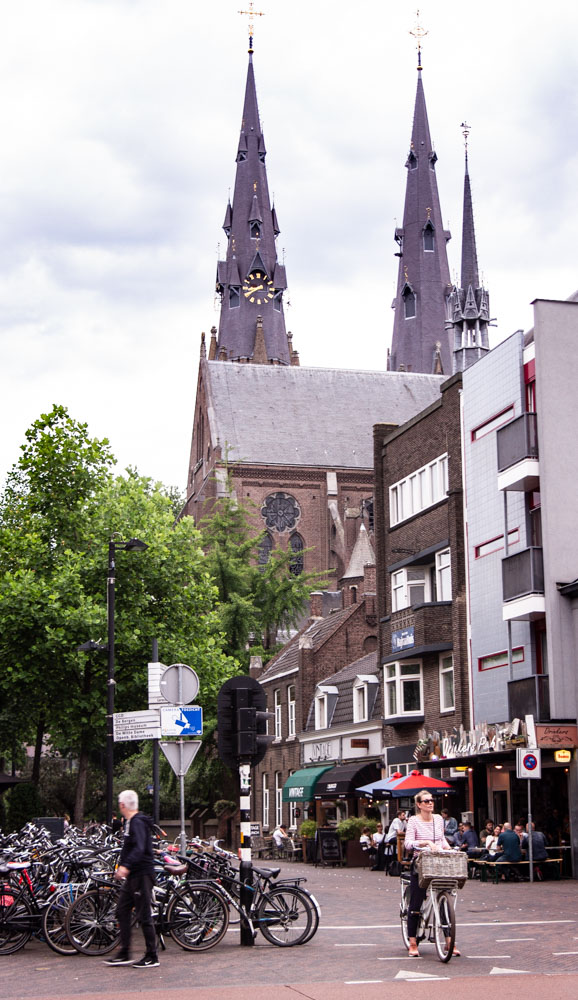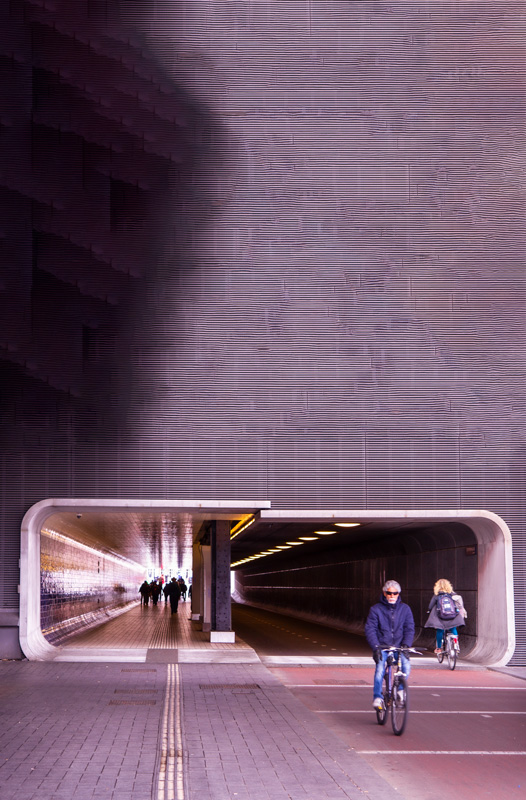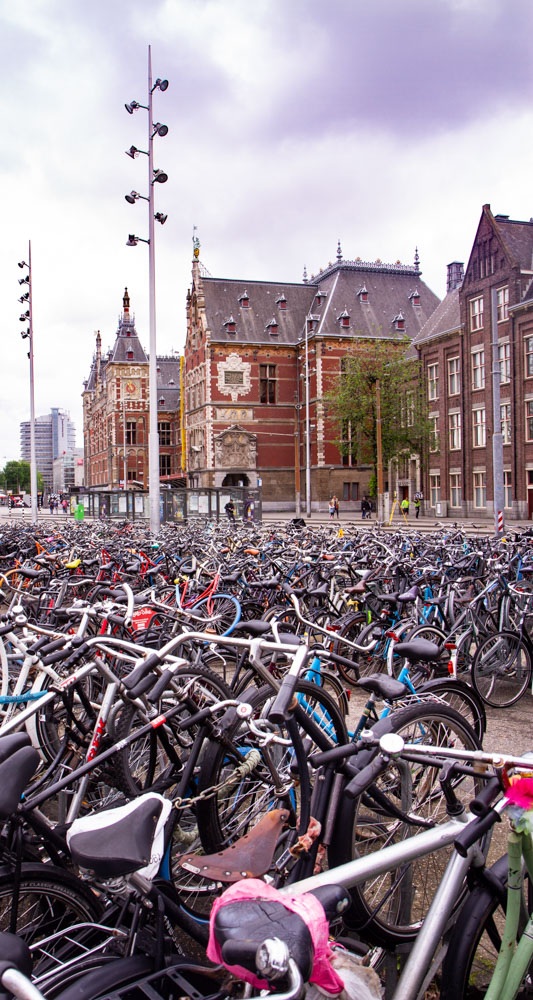Nudging cyclists en-masse
Traffic is often most dangerous when a lot of people meet at once. But not when it comes to Dutch biking. Dutch cyclists should instead be nudged to get more aware when they’re seemingly more alone.
Biking in the Netherlands is a phenomenon of its own. More people bike than in any other country on earth, and the society is fully built to embrace it. In the bigger cities, cyclist jams are as common as car jams are around the world. This of course provides a wholly different traffic situation than in many other parts of the world.
Intersections between cars and bikes are dangerous places in most countries. This also holds for the Netherlands, though bikes have been largely separated from each other. This separation has made traffic safer. Biking lanes may still cross car roads, but these intersections have been improved by traffic lights or changes to the layout of the biking lanes. This system has so far seemed to work really well. MeBeSafe is helping drivers to spot cyclists by introducing a nudge in the car. However, interaction between cars and cyclists are not the only exposure to difficult traffic situations for cyclists.
In the Netherlands, another intersection has instead sailed up as a priority; namely that between bikes and other bikes. Because these will naturally still have to cross their respective ways. An example of such a dangerous spot could be a T-crossing, where endless streams of bikes search to weave themselves together. You could think that a lot of traffic would mean a lot of accidents, but large flow is actually not the issue. The researcher Esra van Dam from TNO explains.

“When it’s rush hour, some T-crossings are really busy. Bike after bike comes along. But there’s so many people that you can’t do exactly what you want. You might have to ride at another speed than the one you would prefer. And then you have to become more aware of the surroundings.”
MeBeSafe aim to make traffic safer by nudging. This means that nudges should be employed where they have the largest effect. But this also means that a nudge to help cyclists get more aware would not really be necessary in the times of Dutch high traffic. When bikes constantly come along, you know that you can’t just turn or speed into other people. When the traffic is calm on the other hand, you will not be as aware of your surroundings, as you don’t see others all the time. But a really empty biking lane is still not the most dangerous spot.
“If the T-crossing is rarely visited by anyone, you might not be likely to run into somebody when you get there” Esra explains. “But busy intersections between the rush hours are somewhat in-between. There are still many people coming, but they are not so many that you always see one turning into your lane from the side when you enter the intersection. Especially not when the view is blocked. And that’s dangerous, because somebody might actually be very close, and you don’t expect them.”
In the Netherlands, you are to give way to the cyclist that is turning out into your lane, if they are coming from the right. This holds no matter if the view is blocked or not. MeBeSafe is determined to help the forward-going bikers when they are approaching seemingly free intersections, to make them aware that they may not in fact be alone.

The prospect is to nudge them to get more aware and to have safer approach towards the intersection. This will give them the opportunity to see if anybody is coming from the other direction, about to turn into their lane in front of them. If somebody does, they would already be running at a lower speed, which makes it easier to brake if that’s necessary.
“We decided to nudge the biker going forward” Esra explains. “They are the ones who should give way – but they might not see the cyclists coming from the right. Consequently, they may not reduce speed.”
This problem of bikes meeting bikes is actually rather similar to how intersections between cars and bikes work. In these intersections, there are also a lot of people, but not so many that there’s a constant line of them that you can see all the time and become aware of the upcoming situation.
Both cars and bikes can approach the intersection without seeing the other in time. This issue has already been investigated in MeBeSafe, both from the car driver’s and the cyclist’s point of view.
“The Swedes looked at helping cyclists to slow down before crossing a car road, while we were investigating another problem on how to help cyclists merge together. So for this case, we could actually borrow the Swedish solution – and just move it to the Dutch context of bikes meeting bikes” Esra describes.

This cyclist nudge is based on flat transversal stripes across the road that are getting closer and closer together before an intersection, to provide a visual illusion of going faster than you actually are. It was shown to have a good effect in the Swedish pre-study, and is now evaluated even further by Chalmers University of Technology in the Swedish context. The Dutch context is about to get the same treatment.
“The nudge has been up on this really busy intersection, and we measured how people behaved before and after” Esra informs. “But science being the way it is, we must wait for the results to be finished.”
But what is to be expected? Well nobody knows as of yet. Results are being analysed and are expected to be finished rather soon. There is a strong probability that the nudge will not always work on the masses of cyclists passing by, but this actually is to be expected. Esra is cautiously optimistic.
“The nudge may of course not work all the time. You might not even see the nudge when there’s a lot if bikes going over it. But that’s not the point. That’s not when it needs to work or even when it should work.” Esra proclaims. “But when you’re alone and approach an intersection where people might turn out in front of you from a blocked intersection, in that very moment, then we might have some effect. That’s what we’re all working for.”
